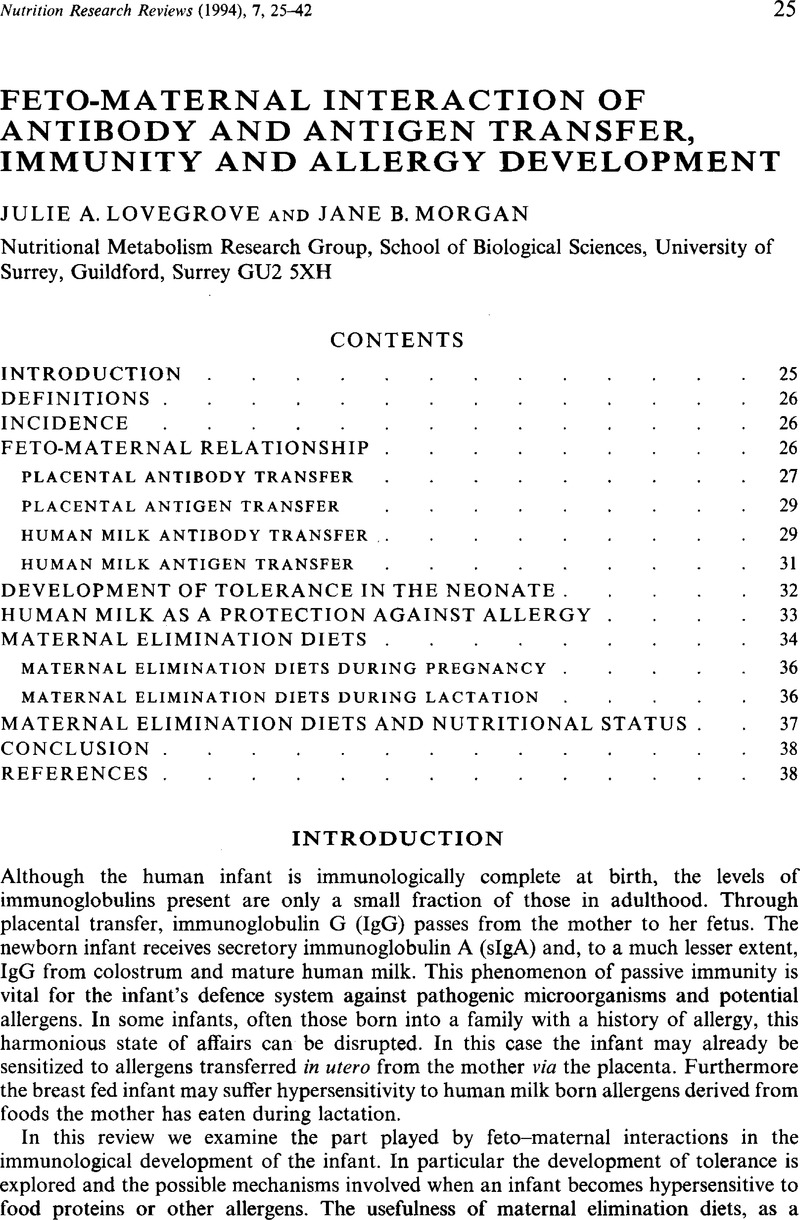Crossref Citations
This article has been cited by the following publications. This list is generated based on data provided by Crossref.
Morga, Jane B.
1997.
Mother‐infant interactions and food allergy development.
Nutrition Bulletin,
Vol. 22,
Issue. 1,
p.
15.
Swain, P.
and
Nayak, S.K.
2009.
Role of maternally derived immunity in fish.
Fish & Shellfish Immunology,
Vol. 27,
Issue. 2,
p.
89.
Sarkar, Rajiv
Ajjampur, Sitara Swarna Rao
Muliyil, Jayaprakash
Ward, Honorine
Naumova, Elena N.
and
Kang, Gagandeep
2012.
Serum IgG Responses and Seroconversion Patterns to Cryptosporidium gp15 among Children in a Birth Cohort in South India.
Clinical and Vaccine Immunology,
Vol. 19,
Issue. 6,
p.
849.
Battersby, Anna J.
and
Gibbons, Deena L.
2013.
The gut mucosal immune system in the neonatal period.
Pediatric Allergy and Immunology,
Vol. 24,
Issue. 5,
p.
414.



